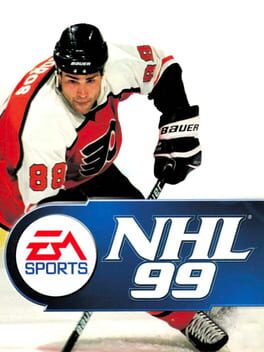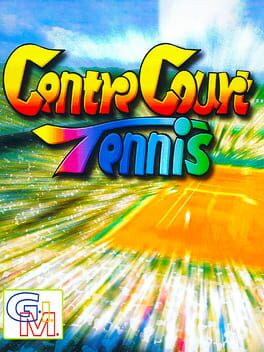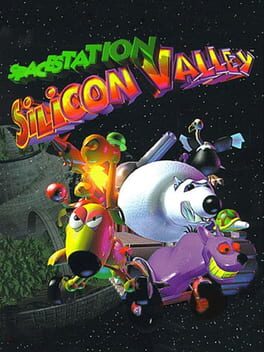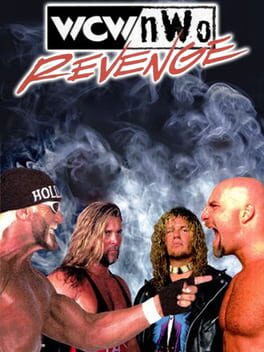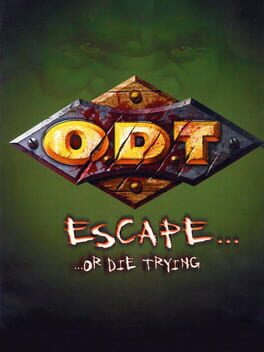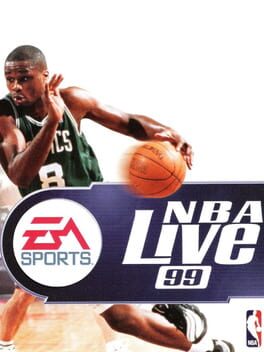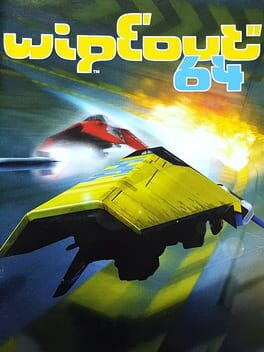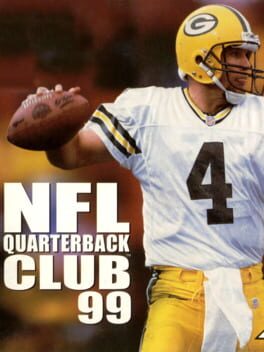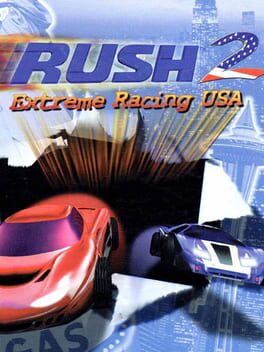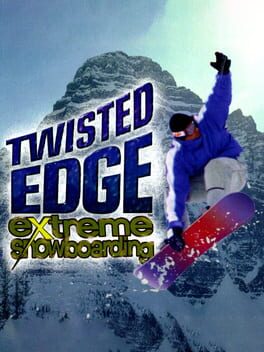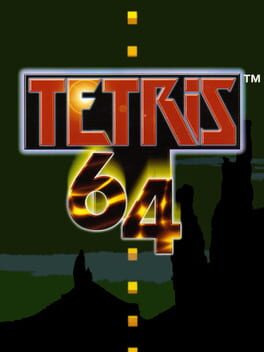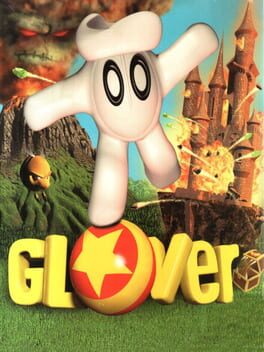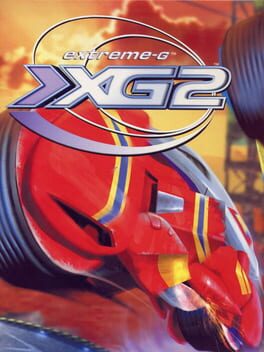Cube1701
1998
While we got plenty of versions of EA’s other sports on N64, but for hockey, this was the only one. EA’s NHL games on the Mega Drive were quite legendary, but for N64 it’s just another ice hockey game. This doesn’t feel particularly broken, but it also doesn’t do anything interesting or special.
One issue with NHL 99 is the passing and the AI of your team – they’re awful at getting into positions, and passing can sometimes send the ball where you don’t intend, meaning the main tactic is to never pass and run at the goal when someone gets the puck.
Wayne Gretzky remains the NHL champion.
One issue with NHL 99 is the passing and the AI of your team – they’re awful at getting into positions, and passing can sometimes send the ball where you don’t intend, meaning the main tactic is to never pass and run at the goal when someone gets the puck.
Wayne Gretzky remains the NHL champion.
1998
The first tennis game on N64, and one that never came out in America. It’s a fairly simple tennis game, but is unfortunately plagued with control issues – the depth perception on the ball during service (you throw the ball far too high in the air) is poor and it’s extremely difficult to aim where you can hit.
The game has a create-a-player mode (which lacks options like hair colour) and the “challenge” mode works alongside this as you challenge the pre-made characters to matches, betting your equipment and clothing (so a kind of strip tennis). This is how you unlock more customisation options, which is a really nice touch – just a shame that the head/hair options are so limited.
If it wasn’t for the control issues, this would be a decent little game, but there will be better tennis games later on in the system’s life.
The game has a create-a-player mode (which lacks options like hair colour) and the “challenge” mode works alongside this as you challenge the pre-made characters to matches, betting your equipment and clothing (so a kind of strip tennis). This is how you unlock more customisation options, which is a really nice touch – just a shame that the head/hair options are so limited.
If it wasn’t for the control issues, this would be a decent little game, but there will be better tennis games later on in the system’s life.
Space Station Silicon Valley is a mission-based puzzle platformer where you reanimate the corpses of dead animals (don’t worry, they’re all robots). It was developed by DMA design (makers of Lemmings, GTA and Body Harvest) and is an immense amount of fun. The game did ship with a bug that meant that you couldn’t pick up one of the collectables, but I played a version that had been patched by fans that fixes the issue.
You play as Evo, a robot that loses its body as he and his hero-for-hire partner crash into a mysterious station that’s on a course for Earth. Evo ends up as just a chip, but discovers that he can take over the bodies of deceased animal robots.
In each level, you must complete multiple objectives, usually done by killing the animals, taking over their bodies and using their various abilities to complete what you need. It all sounds horrific and disturbing when trying to explain it, but the game manages to be incredibly charming throughout this, with happy music that is played through the station speakers (which you can destroy to shut them up).
Discovering how each animal moves and how to use them is one of the main things I love about Space Station Silicon Valley. They all have different kinds of movement – some are like a typical platformer, others are like cars and some can only move when jumping – and the powers have various uses that aren’t just needed to solve the puzzles of the level, but to find all the collectables. This concept was also a large part of Super Mario Odyssey, so my like for this is probably why I loved that, too.
Each level has 15 power cells hidden in it to find, some are in plain view, others are hidden extremely well. A few of them can be quite frustrating to get to, such as some high up ones requiring using a vulture’s awful flight to get there. The game’s dreadful camera also doesn’t help matters, as you can never get a good look around and the cameral often likes looking downwards.
The other kind of collectable is a hidden trophy in each level, which is found by doing a secret objective. Sometimes these are obvious, such as the second level having a racetrack, and often killing everything will yield results, while others are very tricky, such as listing to penguins make sound and recreating it on a keyboard (being tone-deaf, I looked that one up).
Still, even with these annoying ones, it was a joy to collect everything. I’m not 100% completing every N64 game, but this one was one where I wanted to do so.
At the end of each of the four regions, you’ll encounter a level where you find a piece of Evo’s original body. These are quite different to the main gameplay, featuring different events. For example the second area ends with a Jetski-like race called Walrace 64 where you have to win a race as a robotic walrus boat.
Once all these are done, the final mission is defending Earth against invading robots, but unfortunately is probably the weakest level of the game. Still, that slight downer is just the end of a wonderful experience.
While the difficulty is more of a rollercoaster than a curve, you do get used to some of the techniques the game uses, and the wild and wacky robot animals are always an absolute joy to discover – each time you see a new one, you’re eager to kill it and give it a spin.
Space Space Station Silicon valley is a wonderful platformer and one I think more people should try out.
You play as Evo, a robot that loses its body as he and his hero-for-hire partner crash into a mysterious station that’s on a course for Earth. Evo ends up as just a chip, but discovers that he can take over the bodies of deceased animal robots.
In each level, you must complete multiple objectives, usually done by killing the animals, taking over their bodies and using their various abilities to complete what you need. It all sounds horrific and disturbing when trying to explain it, but the game manages to be incredibly charming throughout this, with happy music that is played through the station speakers (which you can destroy to shut them up).
Discovering how each animal moves and how to use them is one of the main things I love about Space Station Silicon Valley. They all have different kinds of movement – some are like a typical platformer, others are like cars and some can only move when jumping – and the powers have various uses that aren’t just needed to solve the puzzles of the level, but to find all the collectables. This concept was also a large part of Super Mario Odyssey, so my like for this is probably why I loved that, too.
Each level has 15 power cells hidden in it to find, some are in plain view, others are hidden extremely well. A few of them can be quite frustrating to get to, such as some high up ones requiring using a vulture’s awful flight to get there. The game’s dreadful camera also doesn’t help matters, as you can never get a good look around and the cameral often likes looking downwards.
The other kind of collectable is a hidden trophy in each level, which is found by doing a secret objective. Sometimes these are obvious, such as the second level having a racetrack, and often killing everything will yield results, while others are very tricky, such as listing to penguins make sound and recreating it on a keyboard (being tone-deaf, I looked that one up).
Still, even with these annoying ones, it was a joy to collect everything. I’m not 100% completing every N64 game, but this one was one where I wanted to do so.
At the end of each of the four regions, you’ll encounter a level where you find a piece of Evo’s original body. These are quite different to the main gameplay, featuring different events. For example the second area ends with a Jetski-like race called Walrace 64 where you have to win a race as a robotic walrus boat.
Once all these are done, the final mission is defending Earth against invading robots, but unfortunately is probably the weakest level of the game. Still, that slight downer is just the end of a wonderful experience.
While the difficulty is more of a rollercoaster than a curve, you do get used to some of the techniques the game uses, and the wild and wacky robot animals are always an absolute joy to discover – each time you see a new one, you’re eager to kill it and give it a spin.
Space Space Station Silicon valley is a wonderful platformer and one I think more people should try out.
While the name may sound similar to Famicom Detective Club, this isn’t related to it in any way. This is a virtual board game from Imagineer, themed around kids solving a mystery in a spooky mansion. It came out shortly before Mario Party, however it has no minigames.
There are three game types in Detective Club 64: Theft, Lost Item and Bomb Hunt. They all involve searching around a mansion, but are slightly different. In Theft, you have to find three items and get to the front door, bomb hunt you need to disable bombs and hand them in while lost item you need to find items and return them to the correct people.
You take turns rolling the dice and moving. You can chose which direction to go in. The main space you’ll be looking for is the magnifying glass, which lets you pick objects in the room to search. These either contain cards to be used as abilities, or the special objects you need to win the game. Some special objects have duplicates, while one of them will only have one copy.
Other spaces make you gain or lose health and money, buy items and some alter your stats. NPCs will also be walking around, some you can talk to for clues, while others will trigger a battle, as will landing on the same space as another player.
The battle is a kind of “rock, paper, scissors” where certain abilities work against others. The loser is stunned and will miss the next turn. The system isn’t awful but, like with the rest of the game, is entirely down to blind luck.
Other than slightly different modes, the game doesn’t have any variety. Even the different mansions are just made up of the same randomly-selected rooms. It’s a very bare-bones release and isn’t even fun in the first place. The deceit part is just window dressing, with the game being more like a very slow version of Neil Buchanan’s Finders Keepers.
There are three game types in Detective Club 64: Theft, Lost Item and Bomb Hunt. They all involve searching around a mansion, but are slightly different. In Theft, you have to find three items and get to the front door, bomb hunt you need to disable bombs and hand them in while lost item you need to find items and return them to the correct people.
You take turns rolling the dice and moving. You can chose which direction to go in. The main space you’ll be looking for is the magnifying glass, which lets you pick objects in the room to search. These either contain cards to be used as abilities, or the special objects you need to win the game. Some special objects have duplicates, while one of them will only have one copy.
Other spaces make you gain or lose health and money, buy items and some alter your stats. NPCs will also be walking around, some you can talk to for clues, while others will trigger a battle, as will landing on the same space as another player.
The battle is a kind of “rock, paper, scissors” where certain abilities work against others. The loser is stunned and will miss the next turn. The system isn’t awful but, like with the rest of the game, is entirely down to blind luck.
Other than slightly different modes, the game doesn’t have any variety. Even the different mansions are just made up of the same randomly-selected rooms. It’s a very bare-bones release and isn’t even fun in the first place. The deceit part is just window dressing, with the game being more like a very slow version of Neil Buchanan’s Finders Keepers.
1998
There isn’t a lot to say about this wrestling game, it’s WCW/nWo World Tour again, this time sped up a little bit. After WWF War Zone, the graphics of Revenge now look extremely dated, and the create-a-wrestler options are severely limited, consisting of picking an existing wrestler, renaming them and changing their outfit.
If you like the wrestlers of this game (and there are a lot), then it does a good job, but not much has been done to change the game since World Tour.
If you like the wrestlers of this game (and there are a lot), then it does a good job, but not much has been done to change the game since World Tour.
ODT was an action game that released on PlayStation and PC. An N64 version was in development, but was cancelled. N64 gave a little blurb saying that it was due to Psygnosis having financial issues (not long after, they were absorbed into Sony), although N64 magazine stated “Not much of a loss as far as ODT’s concerned. Shame about F1, though”.
When a ROM was eventually found, the most surprising thing was that the N64 version was finished, and there were even specific NTSC and PAL versions of the game. However, the poor reception on PlayStation and PC combined with the cost of making cartridges probably influenced the decision to not release it.
ODT is a game clearly inspired by Tomb Raider, but set in a futuristic Jules Verne sci-fi mashup (your ship is called the Nautiflyus, which is just stupid). However, it completely lacks any charm, clever level design or fun that the Tomb Raider games had. Instead, it settles for clunky, low and tedious.
The controls would have been bad when it came out (as reviews on other platforms point out), and feel even worse now. Movement has you turning left and right with the analogue stick, holding a c button to slowly sidestep. The camera does not play nice at all, always at an odd angle behind you, to the point where you can’t see holes or gaps with no way to manipulate it. In some rooms, the camera becomes fixes and the movement feels completely wrong.
The shooting is also just bad. Your gun (you do obtain different kinds of ammo that act differently) sort of homes in on enemies, but not very well and the manual aiming is atrocious. The game also starts off with bat-like enemies that are the most difficult to hit.
There is a magic system in the game that does work well – hold R and press a C-button to use the assigned spell. It’s a while before you properly unlock one, so you’re already fed up before you get to use the spell system. You can also level up your characters and guns, but it’s not very interesting when the gameplay isn’t enjoyable.
The level designs also don’t help. They’re maze-like and mostly made up of small box rooms. You wander around, killing enemies, come to a locked door, backtrack, find a key, go back to the locked door and repeat far too many times. It does sometimes mix it up by having a switch instead of a key. While good games lock the entrances to areas, this game just locks the end, letting you progress through multiple long winding paths before letting you know you went the wrong way 20 minutes ago.
The levels also have platforming sections. With the poor camera and the terrible jumping (sometimes your main character jumps too short) they’re bad enough, but the game then adds crumbling platforms and moving platforms, which the controls aren’t equipped to begin with. To make matters worse, you can get through a gruelling platform section only to encounter a locked door, and you need to go all the way back.
ODT certainly had ideas of ambition. There are multiple characters to play as (including unlockable ones), the magic and upgrade systems are potentially good ideas and the world could be interesting if it wasn’t so ugly. They tried to to far too much with the controls that they ended up sacrificing the main movement of the game.
Sadly, ODT is a game with promise that just ended up squandering it inside far too much tedium.
When a ROM was eventually found, the most surprising thing was that the N64 version was finished, and there were even specific NTSC and PAL versions of the game. However, the poor reception on PlayStation and PC combined with the cost of making cartridges probably influenced the decision to not release it.
ODT is a game clearly inspired by Tomb Raider, but set in a futuristic Jules Verne sci-fi mashup (your ship is called the Nautiflyus, which is just stupid). However, it completely lacks any charm, clever level design or fun that the Tomb Raider games had. Instead, it settles for clunky, low and tedious.
The controls would have been bad when it came out (as reviews on other platforms point out), and feel even worse now. Movement has you turning left and right with the analogue stick, holding a c button to slowly sidestep. The camera does not play nice at all, always at an odd angle behind you, to the point where you can’t see holes or gaps with no way to manipulate it. In some rooms, the camera becomes fixes and the movement feels completely wrong.
The shooting is also just bad. Your gun (you do obtain different kinds of ammo that act differently) sort of homes in on enemies, but not very well and the manual aiming is atrocious. The game also starts off with bat-like enemies that are the most difficult to hit.
There is a magic system in the game that does work well – hold R and press a C-button to use the assigned spell. It’s a while before you properly unlock one, so you’re already fed up before you get to use the spell system. You can also level up your characters and guns, but it’s not very interesting when the gameplay isn’t enjoyable.
The level designs also don’t help. They’re maze-like and mostly made up of small box rooms. You wander around, killing enemies, come to a locked door, backtrack, find a key, go back to the locked door and repeat far too many times. It does sometimes mix it up by having a switch instead of a key. While good games lock the entrances to areas, this game just locks the end, letting you progress through multiple long winding paths before letting you know you went the wrong way 20 minutes ago.
The levels also have platforming sections. With the poor camera and the terrible jumping (sometimes your main character jumps too short) they’re bad enough, but the game then adds crumbling platforms and moving platforms, which the controls aren’t equipped to begin with. To make matters worse, you can get through a gruelling platform section only to encounter a locked door, and you need to go all the way back.
ODT certainly had ideas of ambition. There are multiple characters to play as (including unlockable ones), the magic and upgrade systems are potentially good ideas and the world could be interesting if it wasn’t so ugly. They tried to to far too much with the controls that they ended up sacrificing the main movement of the game.
Sadly, ODT is a game with promise that just ended up squandering it inside far too much tedium.
1998
As EA’s first basketball game on the N64, this isn’t the disaster that FIFA 64 was, but it also doesn’t come close to FIFA 98, resulting in a game that’s just passable.
The menu for this one is quite odd, starting you off with choosing an exhibition match and the options are off to the side. You can change rules settings (including letting you tackle opponents) and there’s a very limited create a player option.
The game feels very clunky. There’s some interesting ideas with the controls – such as holding R to activate a mode where you can pass to a player of your choice with the C-buttons, but passing and shooting don’t feel smooth. It’s not atrocious, it just doesn’t feel very good.
The graphics are similar. The court itself looks very nice, but the players are hideous with broken-looking limbs and extremely boxy.
With NBA Courtside around, this can just be ignored.
The menu for this one is quite odd, starting you off with choosing an exhibition match and the options are off to the side. You can change rules settings (including letting you tackle opponents) and there’s a very limited create a player option.
The game feels very clunky. There’s some interesting ideas with the controls – such as holding R to activate a mode where you can pass to a player of your choice with the C-buttons, but passing and shooting don’t feel smooth. It’s not atrocious, it just doesn’t feel very good.
The graphics are similar. The court itself looks very nice, but the players are hideous with broken-looking limbs and extremely boxy.
With NBA Courtside around, this can just be ignored.
1998
It’s always a shame when you know a game is good quality but you just can’t seem to gel with it. I enjoyed playing F-Zero X for the first time, even though I played F-Zero GX first, so I was hoping the same would be true with Wipeout 64, as I had played Wipeout 2048 on Vita. Sadly, I really could not get the hang of this game at all.
What I think is throwing me off is the camera. It’s not in line with your vehicle, it seems to be instead stuck to the track or something. Your racer is often towards the side of the screen, appearing at an angle. It looks fancy in screenshots, but I think it’s messing with my ability to judge turns. You also seem to “hit” the sides before it seems like you should be doing.
Instead of just having a series of races, there are challenges in multiple categories: racing, time trial and killing enemies. When you’ve completed all these, you then unlock a “super combo” mode where you have to win races while killing enough opponents.
It’s a good idea for extending the singleplayer, especially with only 7 tracks, I just wish I found the gameplay itself to be fun.
What I think is throwing me off is the camera. It’s not in line with your vehicle, it seems to be instead stuck to the track or something. Your racer is often towards the side of the screen, appearing at an angle. It looks fancy in screenshots, but I think it’s messing with my ability to judge turns. You also seem to “hit” the sides before it seems like you should be doing.
Instead of just having a series of races, there are challenges in multiple categories: racing, time trial and killing enemies. When you’ve completed all these, you then unlock a “super combo” mode where you have to win races while killing enough opponents.
It’s a good idea for extending the singleplayer, especially with only 7 tracks, I just wish I found the gameplay itself to be fun.
Knife Edge: Nose Gunner (or just “Knife Edge” in Europe) is a lightgun shooter game that doesn’t come with a lightgun – the N64 itself never had a lightgun, either. A large part of the enjoyment of lightgun games is the manual aiming and firing, so this loses a lot from just moving a cursor and holding down fire.
Spectacle is another big part of them, and this also misses there. The locations are rather bland and lifeless, with very little colour. The camera whizzes around the map, jerking around randomly with unnatural movements, and you have very little time to shoot anything.
There are six short levels, although the game does provide replay value by offering you the option to select a different route at the start of each level. The game is so incredibly dull that you’ll have no desire to actually do this, but at least it’s an option.
You’ll encounter some bosses, which do require you aim for certain parts, but this is mainly solved by wiggling the stick wildly while shooting and seeing what part of the boss flashes. That’s as advanced as the tactics get in the game. There is a dodge option, but the camera just slides slightly to the side so you have no idea if it’s actually done anything.
If this was in the arcades with a proper lightgun, it might provide some entertainment, but would still be a very boring lightgun game.
Spectacle is another big part of them, and this also misses there. The locations are rather bland and lifeless, with very little colour. The camera whizzes around the map, jerking around randomly with unnatural movements, and you have very little time to shoot anything.
There are six short levels, although the game does provide replay value by offering you the option to select a different route at the start of each level. The game is so incredibly dull that you’ll have no desire to actually do this, but at least it’s an option.
You’ll encounter some bosses, which do require you aim for certain parts, but this is mainly solved by wiggling the stick wildly while shooting and seeing what part of the boss flashes. That’s as advanced as the tactics get in the game. There is a dodge option, but the camera just slides slightly to the side so you have no idea if it’s actually done anything.
If this was in the arcades with a proper lightgun, it might provide some entertainment, but would still be a very boring lightgun game.
While this is another American football game, I was pleasantly surprised about this one. I still don’t fully understand (or like) the sport, but I managed to have some fun with this.
It felt like I had more control over the players and the game and players didn’t just flop down at the slightest touch, meaning I could actually breakthrough and score a touchdown (although a touchdown always looks anticlimatic, but that’s the sport’s fault).
This seems to have been achieved without sacrificing the realistic nature of the game. There are more tactics than previous games (you choose starting position and then movement) and it’s still all the real teams and stadiums. It also has some nice little touches, like a half time show.
I wasn’t expecting to get enjoyment out of a game like this, so this must be doing something right to be able to do so when I still don’t fully know the rules of the game.
It felt like I had more control over the players and the game and players didn’t just flop down at the slightest touch, meaning I could actually breakthrough and score a touchdown (although a touchdown always looks anticlimatic, but that’s the sport’s fault).
This seems to have been achieved without sacrificing the realistic nature of the game. There are more tactics than previous games (you choose starting position and then movement) and it’s still all the real teams and stadiums. It also has some nice little touches, like a half time show.
I wasn’t expecting to get enjoyment out of a game like this, so this must be doing something right to be able to do so when I still don’t fully know the rules of the game.
Rush 2 is better than the first game in every single way. The handling is now great, letting you turn at last minute amongst the twists and turns, the levels are more expansive with a ton of shortcuts to find, and it feels like a full video game rather than a full conversion.
The tracks feels fairly simple to begin with but as you explore them in the games best mode – practice – you’ll discover a massive amount of connected shortcuts, with multiple paths – not all of them helpful. Exploring the levels and figuring out which routes help you is a big part of the game, and the encourages this even more by hiding a ton of keys (and other collectibles) across the expansive maps.
Just driving around is a ton of fun, and the “reset” when you crash is much more suited for this mode – in the original, it tried to put you back “on track”, sometimes warping you across half the map – while this resets you close to where you exploded.
There are a bunch of tracks set across the USA, but the best ones are the ones not based on American locations. My favourite is the Midway level, which is set in a giant office building filled with computers and filled with various arcade machines of other Midway games, which also have billboards throughout the game along with adverts for magazines, like EGM and Nintendo Power (no deals were made for Europe, though, so the PAL version still has the US magazines).
There are also three stunt tracks. Two of these are suitable for racing on, while the third is a large skate park-like arena for you to have fun in.
Rush 2 takes things that felt like bolted-on experiments in the first game and brings them into focus. It’s a really fun racing game and one where just cruising around the levels is extremely enjoyable.
The tracks feels fairly simple to begin with but as you explore them in the games best mode – practice – you’ll discover a massive amount of connected shortcuts, with multiple paths – not all of them helpful. Exploring the levels and figuring out which routes help you is a big part of the game, and the encourages this even more by hiding a ton of keys (and other collectibles) across the expansive maps.
Just driving around is a ton of fun, and the “reset” when you crash is much more suited for this mode – in the original, it tried to put you back “on track”, sometimes warping you across half the map – while this resets you close to where you exploded.
There are a bunch of tracks set across the USA, but the best ones are the ones not based on American locations. My favourite is the Midway level, which is set in a giant office building filled with computers and filled with various arcade machines of other Midway games, which also have billboards throughout the game along with adverts for magazines, like EGM and Nintendo Power (no deals were made for Europe, though, so the PAL version still has the US magazines).
There are also three stunt tracks. Two of these are suitable for racing on, while the third is a large skate park-like arena for you to have fun in.
Rush 2 takes things that felt like bolted-on experiments in the first game and brings them into focus. It’s a really fun racing game and one where just cruising around the levels is extremely enjoyable.
The first emulator I booted Twisted Edge in didn’t have the sound working. After moving to one that worked better, I regretted it due to the game’s utterly dreadful music. I even checked YouTube videos just to make sure what I was hearing wasn’t an emulator issue, but it sounded just as terrible.
Twisted Edge is a snowboarding racing game similar to 1080° Snowboarding, but massively lacking the kind of polish that Nintendo put on their games.
The biggest weakness of Twisted Edge are the tracks. They all look too close to each other and mostly feel the same. There are a few short sections that are noticeable, such as a bridge and the inside of a pipe, but at the end of the game I would have guessed that there were only three tracks (with some slightly longer versions), but it turned out I raced on seven.
The tracks are also very boring, mostly wide open and not much to interact with. The inside of the pipe I mentioned? Whenever you see one of those, your first instinct is to do all loop, but the side is essentially a flat wall and you’ll fall over if you get too close.
Your recovery speed is also the main difficulty of the game. Fall over and it takes ages to reach top speed (which still feels slow). This also counts if an opponent touches you. When the main movement is quite dull, having to restart due to one mistake (or even an opponent flying into the back of you) is just frustrating.
The best part of the game so far is the game’s announcer saying the odd move names like “tuna salad” or “stale fish air”.
Twisted Edge is a snowboarding racing game similar to 1080° Snowboarding, but massively lacking the kind of polish that Nintendo put on their games.
The biggest weakness of Twisted Edge are the tracks. They all look too close to each other and mostly feel the same. There are a few short sections that are noticeable, such as a bridge and the inside of a pipe, but at the end of the game I would have guessed that there were only three tracks (with some slightly longer versions), but it turned out I raced on seven.
The tracks are also very boring, mostly wide open and not much to interact with. The inside of the pipe I mentioned? Whenever you see one of those, your first instinct is to do all loop, but the side is essentially a flat wall and you’ll fall over if you get too close.
Your recovery speed is also the main difficulty of the game. Fall over and it takes ages to reach top speed (which still feels slow). This also counts if an opponent touches you. When the main movement is quite dull, having to restart due to one mistake (or even an opponent flying into the back of you) is just frustrating.
The best part of the game so far is the game’s announcer saying the odd move names like “tuna salad” or “stale fish air”.
1998
Tetris 64 is Tetris on the Nintendo 64. The main mode is basic Tetris. No bells or whistles, just a slideshow on in the background and acceptable background music. The thing is, everyone already had Tetris on the Game Boy, which was portable so much easier to just play a round and it had the amazing classic Tetris music.
There are a few options in the regular mode, such as one where rows of bricks come up from the bottom as time goes on, so it does a decent job, but it has a few more, one silly and one rather interesing.
The silly one is Giga Tetris, where you have to place a mixture of giant tetrominos (one “block” is the same as a regular 2×2 tetromino). The variation is not particularly good, and it doesn’t feel like you can do that much planning.
The interesting mode is unfortunately one that I can’t play as it requires an additional piece of the hardware. You know the infamous Wii Vitality Sensor that never released? And how people said that it could be used for horror games or something like Tetris? Well, the latter already happened on the N64, using the Bio Sensor that plugged into the N64 controller and clipped onto your ear to read your heartrate.
Despite how interesting this sounds, N64 Magazine stated that they didn’t notice much different in this mode. The Bio Sensor wasn’t included with the game, yet it was the only game it was compatible with.
There are a few options in the regular mode, such as one where rows of bricks come up from the bottom as time goes on, so it does a decent job, but it has a few more, one silly and one rather interesing.
The silly one is Giga Tetris, where you have to place a mixture of giant tetrominos (one “block” is the same as a regular 2×2 tetromino). The variation is not particularly good, and it doesn’t feel like you can do that much planning.
The interesting mode is unfortunately one that I can’t play as it requires an additional piece of the hardware. You know the infamous Wii Vitality Sensor that never released? And how people said that it could be used for horror games or something like Tetris? Well, the latter already happened on the N64, using the Bio Sensor that plugged into the N64 controller and clipped onto your ear to read your heartrate.
Despite how interesting this sounds, N64 Magazine stated that they didn’t notice much different in this mode. The Bio Sensor wasn’t included with the game, yet it was the only game it was compatible with.
1998
I have quite fond memories of Glover from when I was a kid, but upon trying to replay it, I discovered that I barely saw anything in the game – just the initial level. I wasn’t prepared for just how difficult this game is, and not entirely for the right reasons.
In Glover, you play a wizard’s glove as he tries to restore the magic crystals that were protecting the kingdom, turning them into balls to protect them. You have to get a crystal to the end of each world, trying not to lose or break it along the way.
Glover has a lot of charm going for it. The controls are unique and fiddly, as you bounce the ball to gain height, throwing and slapping it to move it around the level. On top of this, you can transform the ball though a few different types for different attributes.
If the game’s levels worked in conjunction with Glover’s moveset, it could be a great game. Instead, once you get past the stating level, the game tries to work against you as much as possible, filled with bottomless pits, awkward platforming, unclear ways to progress and just a general sense that the game wants you to suffer. This is made even worse by the game’s camera, which throws you off narrow platforms by suddenly moving to try and give you a better view.
I ended up using a level select cheat to see as much of the game as I could, and all levels from the second onwards are like this. On top of getting to the end of the level, there are also collectibles to find to unlock some bonus levels, such as a Frogger clone which controls horribly. A lot of these are found on branching paths, so if you’re just trying to find the exit, you can end up wasting your time on the wrong route.
The concept of the Glover is great, and there’s a lot of charm to the simple world of the game. Unfortunately, the platforming feels imprecise and the level design hinders the experience rather than compliments it. It’s a great memory, but one of those best left as memory.
In Glover, you play a wizard’s glove as he tries to restore the magic crystals that were protecting the kingdom, turning them into balls to protect them. You have to get a crystal to the end of each world, trying not to lose or break it along the way.
Glover has a lot of charm going for it. The controls are unique and fiddly, as you bounce the ball to gain height, throwing and slapping it to move it around the level. On top of this, you can transform the ball though a few different types for different attributes.
If the game’s levels worked in conjunction with Glover’s moveset, it could be a great game. Instead, once you get past the stating level, the game tries to work against you as much as possible, filled with bottomless pits, awkward platforming, unclear ways to progress and just a general sense that the game wants you to suffer. This is made even worse by the game’s camera, which throws you off narrow platforms by suddenly moving to try and give you a better view.
I ended up using a level select cheat to see as much of the game as I could, and all levels from the second onwards are like this. On top of getting to the end of the level, there are also collectibles to find to unlock some bonus levels, such as a Frogger clone which controls horribly. A lot of these are found on branching paths, so if you’re just trying to find the exit, you can end up wasting your time on the wrong route.
The concept of the Glover is great, and there’s a lot of charm to the simple world of the game. Unfortunately, the platforming feels imprecise and the level design hinders the experience rather than compliments it. It’s a great memory, but one of those best left as memory.
1998
Racing sequels typically take the same formula, refine it and have a bunch of new tracks, but XG2 feels a lot further apart from its predecessor than I expected. While I can easily see people preferring this, the differences are not ones I like.
The biggest ones are due to the tracks. The originals were colourful, but also fairly simple, allowing you to remain full speed throughout most of the game. In XG2, they’re very dull in colour and work against the speed of the game, requiring a lot more care to navigate.
Contrasting the lack of colour are the extremely out of place billboard for Diesel and Storm – with Storm even getting a permanent place as the lap timer on the HUD. They really don’t gel with the style of the game, and there are far too many of them.
There is a a good umber of levels this time, and there are different variants that take different routes – annoyingly, though, the barriers blocking the routes used in the different versions are incredibly gaudy and, like the billboards, detract from the tracks.
The game is still a lot of fun, with an immense sense of speed when the game lets you, yet it feels a bit more clunky from the original and there’s just something that feels missing that I can’t quite figure out.
The preference of the first or second game is entirely down to each person, though, as some of the things I disliked will be reasons that others enjoyed this one more.
The biggest ones are due to the tracks. The originals were colourful, but also fairly simple, allowing you to remain full speed throughout most of the game. In XG2, they’re very dull in colour and work against the speed of the game, requiring a lot more care to navigate.
Contrasting the lack of colour are the extremely out of place billboard for Diesel and Storm – with Storm even getting a permanent place as the lap timer on the HUD. They really don’t gel with the style of the game, and there are far too many of them.
There is a a good umber of levels this time, and there are different variants that take different routes – annoyingly, though, the barriers blocking the routes used in the different versions are incredibly gaudy and, like the billboards, detract from the tracks.
The game is still a lot of fun, with an immense sense of speed when the game lets you, yet it feels a bit more clunky from the original and there’s just something that feels missing that I can’t quite figure out.
The preference of the first or second game is entirely down to each person, though, as some of the things I disliked will be reasons that others enjoyed this one more.
